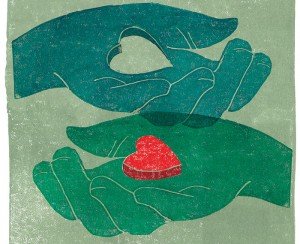This holiday season, you can give your children video games and American Girl dolls and smart phones. Or you can give your son or daughter a sheep, a beehive or a mosquito net. Granted, they won’t find that sheep under the tree or the beehive beside the menorah. Rather, these gifts are available through organizations such as Oxfam America Unwrapped, Heifer International and Nothing But Nets that facilitate giving to people in need. Other groups, like Jedidiah and Ten Thousand Villages, sell gifts such as clothing, jewelry and pottery made by entrepreneurial people in economically struggling areas. Altruette sells jewelry and donates 50 percent of its profits to causes that it supports.
Such organizations offer parents a way to counter holiday materialism and foster philanthropic habits in their kids. But parents genuinely looking to offer a “teachable moment,” as the jargon goes, should know that teaching kids about philanthropy goes beyond simply purchasing a cow. “The idea is how to hit the pause button on the ‘Gotta have it now’ mentality,” says Nathan Dungan, a former financial consultant who is president of Share Save Spend, an organization that helps families develop financial habits which incorporate saving and sharing. “But you have to dig into it.”

Many parents offer their children money to give to a charity of their choice, but people who study the issue have mixed feelings about that approach. “It can lead to unintended consequences,” says Joseph Kahne, a professor of education at Mills College in California. “Suppose a parent said to an 11-year-old, ‘Here’s $500 that you can give to one of the following charities.’ The child might turn [the philanthropy] into a game without a clear understanding of what the charities do and without follow-through.”
It’s probably more constructive to begin by talking to your children about issues they can understand. “For kids, giving has to feel really personal,” says Kimberly Palmer, author ofGeneration Earn: The Young Professional’s Guide to Spending, Investing and Giving Back . “Often that’s something involving other children”—kids affected by a natural disaster, for example. Palmer also advocates having children do something hands-on, such as packing boxes or making crafts. “It’s about creating or making something,” she explains. “It has to go beyond the money.”
Volunteering is another good option. Helping at an animal shelter or working with an environmental group to pick up litter or plant at a community garden can give children firsthand exposure to real-world issues and instill a tangible sense of satisfaction—they can see the results of their work. But it’s important for parents to discuss the nature of the volunteerism with their kids beforehand. Children who show up to serve food at a homeless shelter without understanding anything about the causes of homelessness—or what they might encounter there—could wind up turned off of volunteerism by the experience.

Doing good doesn’t mean you have to abandon material gifts. After all, presents for loved ones are also part of the generosity of the holiday season. One option, says Tim Kasser, a psychology professor at Illinois’ Knox College who has studied the effect of money on children’s values, is to calculate how much your family spends on holiday gifts, and agree to donate a percentage of that amount—or a match—to charities.
If it works, cultivating philanthropy during the holidays can form a habit that will last a lifetime—and certainly far longer than that shiny new Xbox.








